Brú na Bóinne - Archaeological Ensemble of the Bend of the Boyne - Newgrange: The Bend of the Boyne is situated on the north bank of the river Boyne near Dublin. The Bend of the Boyne is the most sacred and most mythical landscape of Ireland. The site is dominated by three large passage tombs: Newgrange, Knowth and Dowth. Newgrange is the best known passage tomb, it was constructed around 3200 BC. Newgrange is around 1000 years older than Stonehenge. At dawn on the morning of the Winter Solstice, and for a number of days before and after, the inside of the main chamber at Newgrange is illuminated by a beam of sunlight for seventeen minutes, this alignment with the sun is too precise to have occurred by chance. It is thought that Newgrange is the oldest surviving deliberately aligned structure in the world. It is estimated that there are about 700 decorated stones in the Bend of the Boyne. The most famous decorated stone in the Bend of the Boyne is the one marking the entrance to Newgrange. The Bend of the Boyne is the largest and most important site of megalithic art in Europe. The visitors access is through the Brú na Bóinne Visitor Centre near the village of Donore and by guided tour only. Visitors are advised to come as early in the day as possible, the number of visitors that can be accommodated at Newgrange and Knowth each day is restricted. Visitors are brought from the Brú na Bóinne Visitor Centre to the passage tombs by shuttle bus. The Archaeological Ensemble of the Bend of the Boyne gained status as a UNESCO World Heritage in 1993. Name change in 2013: Brú na Bóinne - Archaeological Ensemble of the Bend of the Boyne. World Heritage Art: Bend of the Boyne
www.werelderfgoedfotos.nl © Copyright World Heritage Photos
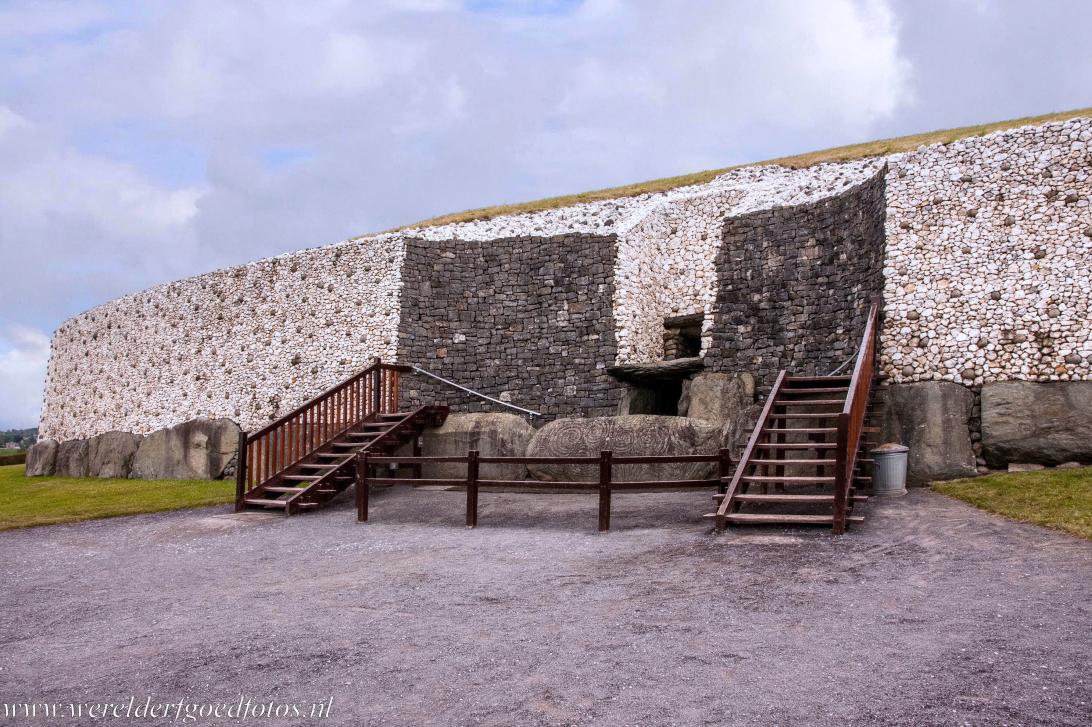
Brú na Bóinne - Archaeological Ensemble of the Bend of the Boyne: The white quartz façade of Newgrange. Newgrange is the most famous prehistoric monument in Ireland, the passage tomb was constructed around 3200 BC. Newgrange is approx. 1000 years older than Stonehenge and approx. 700 hundred years older than the Pyramids of Giza. The Brú na Bóinne - Archaeological Ensemble of the Bend of the Boyne was added to the UNESCO World Heritage List in 1993.

Brú na Bóinne - Archaeological Ensemble of the Bend of the Boyne: The white quartz façade of Newgrange. Newgrange is the most famous prehistoric monument in Ireland, the passage tomb was constructed around 3200 BC. Newgrange is approx. 1000 years older than Stonehenge and approx. 700 hundred years older than the Pyramids of Giza. The Brú na Bóinne - Archaeological Ensemble of the Bend of the Boyne was added to the UNESCO World Heritage List in 1993.
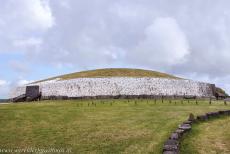
Brú na Bóinne - Archaeological Ensemble of the Bend of the Boyne: Newgrange is the best known passage tomb in Ireland. Newgrange is approx. 80 metres in diameter and 13.5 metres high and is surrounded by kerb of stones. Newgrange is the most famous passage tomb in the Brú na Bóinne - the Archaeological Ensemble of the Bend of the Boyne. The Bend of the Boyne is the most mythical landscape of Ireland.
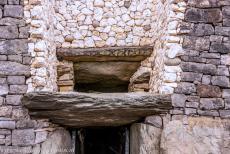
Brú na Bóinne - Archaeological Ensemble of the Bend of the Boyne: The roof box of Newgrange. At sunrise on the morning of the winter solstice, and a few days before and after, the central chamber of Newgrange is illuminated by a beam of sunlight for 17 minutes. This alignment with the sun is too precise to have occurred by chance. It is thought that the Newgrange megalithic passage tomb is the oldest surviving deliberately aligned structure in the world.
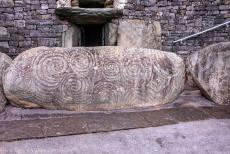
Brú na Bóinne - Archaeological Ensemble of the Bend of the Boyne: The Entrance Stone of the Newgrange passage tomb is the most famous decorated stone in the Bend of the Boyne. The stone is decorated with spirals, explained as symbols of life. Behind the stone lies the 19 metres long passage into the intense dark chambered tomb. During the guided tour, the winter solstice phenomenon and burial rituals are explained.
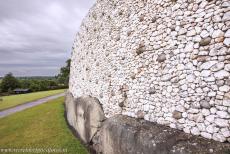
Brú na Bóinne - Archaeological Ensemble of the Bend of the Boyne: The Newgrange passage tomb is surrounded by numerous smaller satellite graves. The passage tombs in the Bend of the Boyne were meant to be the permanent houses for the bones and spirits of the ancestors. The tombs were not just burial places, they had a number of functions, such as territorial markers or centres of religious ceremonies.
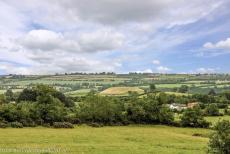
Brú na Bóinne-Archaeological Ensemble of the Bend of the Boyne: Newgrange viewed from the passage tomb Knowth. Visitors access to Newgrange is only by guided tour from Brú na Bóinne Visitor Centre, the visitor centre is situated nearby the Irish village of Donore. The 5000 year old Newgrange is one of the many megalithic passage tombs in the Bend of the Boyne. Newgrange, Knowth, Dowth and their satellite tombs were declared a UNESCO World Heritage in 1993.
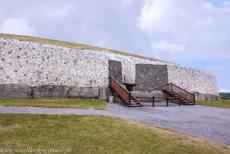
Brú na Bóinne - Archaeological Ensemble of the Bend of the Boyne: Newgrange is one of the larger tombs of the Brú na Bóinne, the Bend of the Boyne. The site is situated on the north bank of the River Boyne and dominated by three impressive passage tombs: Newgrange, Knowth and Dowth. There are as many as 35 smaller passage tombs. The Brú na Bóinne is an area inside the bend of the River Boyne. Brú na Bóinne means: the palace or the mansion of the Boyne.
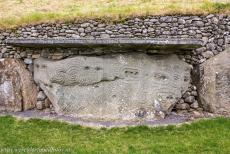
Brú na Bóinne - Archaeological Ensemble of the Bend of the Boyne: Kerbstone 52 at the back of Newgrange is engraved with megalithic art. The Newgrange passage tomb is surrounded at its base by a kerb of 97 stones, the Entrance Stone is the most impressive and most famous. There are more than 700 decorated stones in the Bend of the Boyne. The Archaeological Ensemble of the Bend of the Boyne is the largest and most important site of megalithic art in Europe.
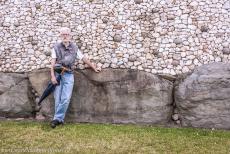
Brú na Bóinne - Archaeological Ensemble of the Bend of the Boyne: The white quartz façade of Newgrange is a reconstruction. Newgrange is surrounded by a kerb of 97 large boulders. The megalithic passage tomb Newgrange was excavated from 1962 to 1975 by the archaeologist Professor Michael O'Kelly. He designed the reconstruction of the white quartz façade and also discovered the roof box through which the mid-winter sun penetrates into the central chamber.
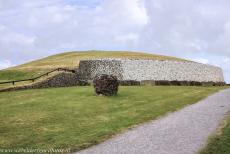
Brú na Bóinne - Archaeological Ensemble of the Bend of the Boyne: The mound of Newgrange covers a tomb consisting of a long passage, at the end of the 19 metres long passage is a cross-shaped chamber, roofed by a high corbelled vault. The chamber was watertight and remained intact. Passage tombs are usually situated on hilltops. Although primarily burial sites, they also were status symbols and territorial markers.
